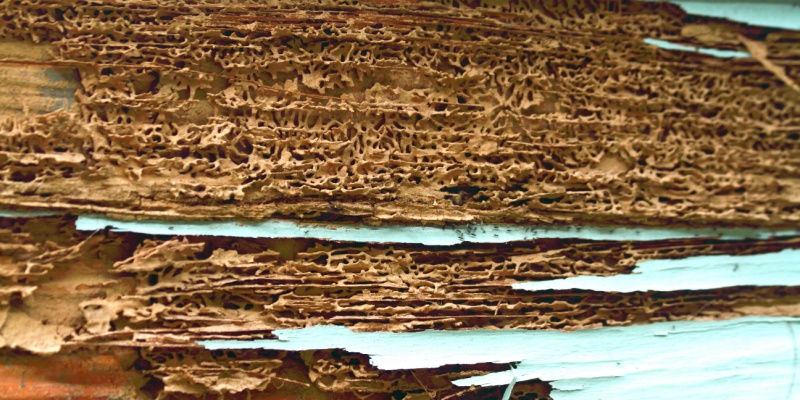Understanding whether your home is infested with drywood termites is crucial for maintaining its structural integrity and value. Drywood termites can cause significant damage as they consume wood, unlike subterranean termites that require contact with soil. Here’s a comprehensive guide on how to prevent an infestation if you do not already have one, identify if you have drywood termites, and what steps you can take to address an infestation.
Prevention Tips
Let’s start with prevention. Prevention is always the best option if you do not have a current infestation in your home.
- Regular Inspections: Conducting regular inspections can help catch infestations early, before significant damage is done. Pay special attention to attic spaces, crawl spaces, and areas where wood components are close to or touch the ground.
- Reduce Wood-to-Ground Contact: Where possible, reduce the contact that wood structures have with the ground, as this can offer termites easy access to food sources.
- Seal Entry Points: Seal cracks and crevices around the exterior of your home, especially where utility lines enter, to help prevent termite entry.
- Maintain Dry Conditions: Drywood termites require less moisture than other termite species, but reducing humidity with proper ventilation can further protect your home.
- Use Treated Wood: When repairing or building, use termite-resistant wood or treat wood with termite repellent to help deter infestation.
Identification of Drywood Termites
Drywood termites are typically larger than their subterranean counterparts. They range from 3/8 to 1 inch in length and are often pale brown, making them somewhat easier to spot against lighter woods.
Signs of Drywood Termite Infestation
1. Frass (Termite Droppings)
Drywood termites create distinctive pellets, often mistaken for sawdust, which are their droppings, known as frass. These pellets are usually found beneath infested areas. Frass is a tell-tale sign of drywood termite presence because these termites push their droppings out of small holes near the entrances to their nests to keep their galleries clean.
2. Visible Tunnels in Wood
These termites consume wood, leaving behind a honeycomb-like pattern of tunnels and galleries that can weaken structural timbers. Unlike some pests that eat through wood, drywood termites leave these galleries smooth, which helps differentiate their presence from other wood-boring insects.
3. Hollow Sounds in Infected Wood
Tapping on wood that has been compromised by drywood termites will often produce a hollow sound because the interior has been eaten away. This method can be an effective preliminary test before seeking professional confirmation.
4. Discarded Wings
Drywood termites undergo swarming flights to start new colonies. After these flights, termites shed their wings. Finding discarded wings inside your home can indicate a nearby infestation and the potential start of a new colony.
5. Damaged or Blistered Wood Surfaces
As termites work just below the surface, the wood can appear blistered or bulging. This damage can often be mistaken for water damage but is due to the tunneling activities of drywood termites.
Managing Drywood Termite Infestations
- Professional Inspection: If you notice any of the above signs, it’s crucial to contact a pest control professional. A thorough inspection will confirm the presence of drywood termites and the extent of the infestation.
- Treatment Options: Treatment methods vary depending on the infestation’s severity and location. Common treatments include:
- Spot Treatments: This method involves injecting termiticide directly into the infested wood or into accessible termite galleries.
- Fumigation: For extensive infestations, a whole-house fumigation may be necessary. This process involves enveloping the house in a gas-tight tarp and releasing a gas that penetrates all crevices and kills termites throughout the structure.
- Heat Treatment: This non-chemical option involves raising the temperature of infested areas to levels that are lethal to termites.
Early detection and professional intervention are key to managing drywood termite infestations effectively. Regular maintenance and vigilance can help protect your property from the costly damage these pests can inflict. If you suspect an infestation, act swiftly to preserve the integrity and value of your home.
